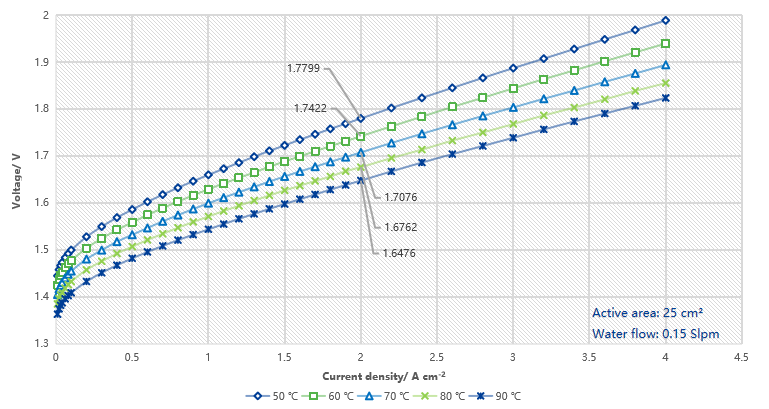CONTACT US
Product Overview
The PEM water electrolysis membrane electrode is an electrolytic water catalyst product developed by our company, featuring internationally advanced levels of iridium (Ir) loading and excellent overall performance. This electrode is designed to enhance the efficiency and stability of water electrolysis reactions, supporting the production and application of hydrogen energy and contributing to the development of clean energy.

Product Features
High-Efficiency Catalyst: The anode catalyst is composed of IrO₂, with a loading of only 1.0 mg Ir/cm², significantly reducing the cost of precious metals.
Outstanding Performance: Achieving a performance of 1.70 V at a current density of 2 A/cm², ensuring efficient hydrogen production.
Customizable Design: Membrane electrode designs can be tailored to meet specific customer needs and application scenarios, accommodating diverse requirements.
Consistent Quality: Utilizes an efficient fusion process of direct coating and transfer, with a precious metal loading variance of less than 1%, ensuring high consistency in product quality.
Low Hydrogen Permeability: Hydrogen permeability is less than 0.2% (under conditions of 3.5 MPa and 2 A/cm²), enhancing the overall efficiency and safety of the system.
Applications
Hydrogen Production: Widely used for electrolytic hydrogen production, providing efficient solutions for the utilization of renewable energy.
Fuel Cells: Applicable in various fuel cell systems to enhance hydrogen generation efficiency and overall battery performance.
Environmental Protection: Facilitates efficient hydrogen production, contributing to emission reductions and the achievement of sustainable development goals.
| Parameter | Unit | Specification |
| Model | - | EPCW-R930C |
| Anode Catalyst / Loading | - | IrO₂, 1.0 mgIr/cm² |
| Cathode Catalyst / Loading | - | Pt/C, 0.4 mgPt/cm² |
| Hydrogen Neutral Catalyst / Loading | - | 0.08 mgPt/cm² |
| Proton Membrane Thickness | μm | 105±5 |
| CCM Total Thickness | μm | 125±5 |
| Hydrogen Permeability | % | <0.2% (3.5 MPa, 2 A/cm²) |
| Performance | V @ A/cm² | 1.70 V @ 2 A/cm² |
 woboenerkeco
woboenerkeco











